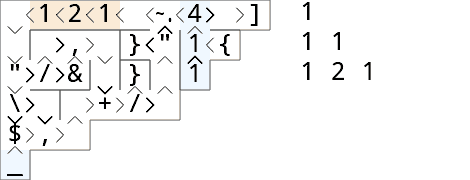Pascal's triangle is generated by starting with a 1 on the first row. On subsequent rows, the number is determined by the sum of the two numbers directly above it to the left and right.
To demonstrate, here are the first 5 rows of Pascal's triangle:
1
1 1
1 2 1
1 3 3 1
1 4 6 4 1
The Challenge
Given an input n (provided however is most convenient in your chosen language), generate the first n rows of Pascal's triangle. You may assume that n is an integer inclusively between 1 and 25. There must be a line break between each row and a space between each number, but aside from that, you may format it however you like.
This is code-golf, so the shortest solution wins.
Example I/O
> 1
1
> 9
1
1 1
1 2 1
1 3 3 1
1 4 6 4 1
1 5 10 10 5 1
1 6 15 20 15 6 1
1 7 21 35 35 21 7 1
1 8 28 56 70 56 28 8 1



